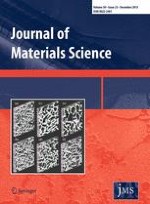Open Access 01.12.2015 | Original Paper
Altering crystal growth and annealing in ice-templated scaffolds
Erschienen in: Journal of Materials Science | Ausgabe 23/2015
Aktivieren Sie unsere intelligente Suche, um passende Fachinhalte oder Patente zu finden.
Wählen Sie Textabschnitte aus um mit Künstlicher Intelligenz passenden Patente zu finden. powered by
Markieren Sie Textabschnitte, um KI-gestützt weitere passende Inhalte zu finden. powered by
